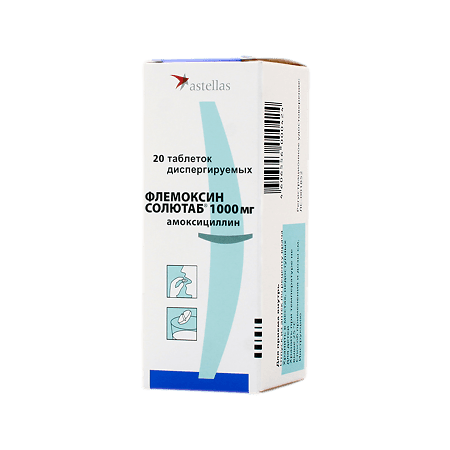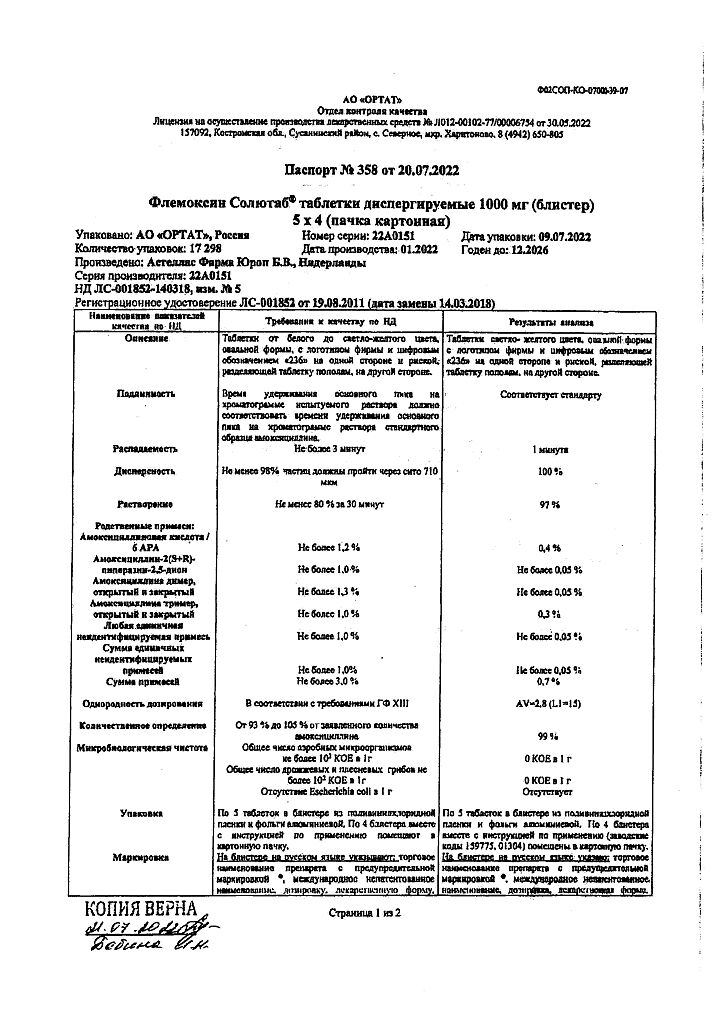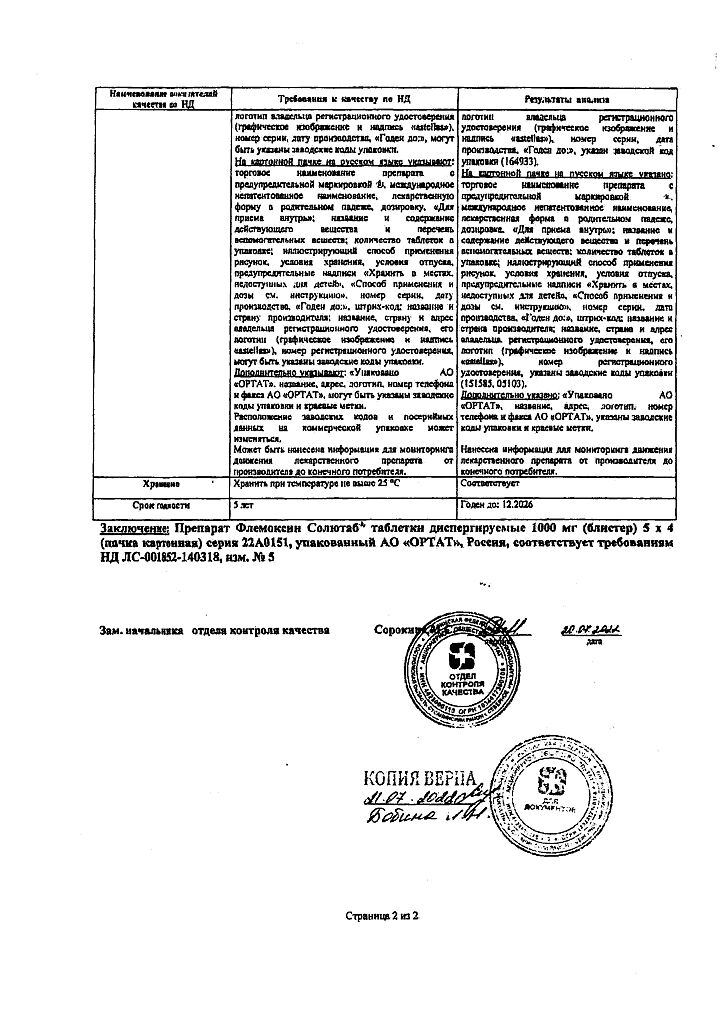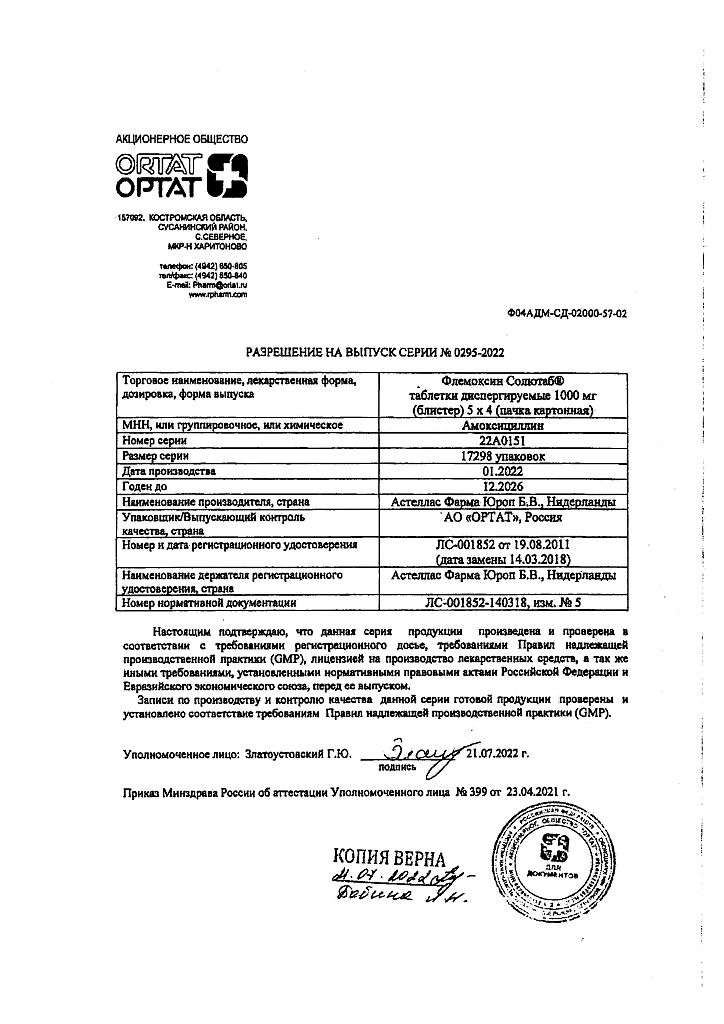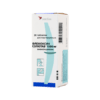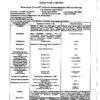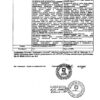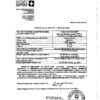No products in the cart.
Flemoxin Solutab, 1000 mg 20 pcs
€13.96 €12.22
Out of stock
(E-mail when Stock is available)
Description
Flemoxin Solutab bactericidal, antibacterial.
Pharmacodynamics
Active against Gram-positive and Gram-negative microorganisms such as Streptococcus pyogenes, Streptococcus pneumonia, Clostridium tetani, C.welchii, Neisseria gonorrhoeae, Neisseria meningitidis, Staphylococcus aureus (not producing beta-lactamase), Bacillus anthracis, Listeria monocytogenes, Helicobacter pylori. Less active against Enterococcus faecalis, Escherichia coli, Proteus mirabilis, Salmonella typhi, Shigella sonnei, Vibrio cholerae. It is not active against beta-lactamase-producing microorganisms, Pseudomonas spp., indole-positive Proteus spp., Serratia spp., Enterobacter spp.
Pharmacokinetics
Absorption
After oral administration is quickly and almost completely absorbed (about 93%), acid resistant. After an oral dose of 500 mg, the Cmax of the active substance in plasma is 5 µg/ml and is noted in plasma after 2 hours. When increasing or decreasing the dose of the drug by 2 times, the Cmax in plasma also changes by 2 times.
Eating has almost no effect on absorption of the drug.
Distribution
The binding to plasma proteins is about 20%. Amoxicillin penetrates well into the mucous membranes, bone tissue, intraocular fluid and sputum at therapeutically effective concentrations. The concentration of amoxicillin in bile exceeds its concentration in blood plasma by 2-4 times. In amniotic fluid and umbilical vessels amoxicillin concentration is 25-30% of its level in the blood plasma of a pregnant woman.
Poorly penetrates through the BBB, but in inflammation of the cerebral membranes, the concentration in the cerebrospinal fluid is about 20% of the plasma concentration.
Metabolism
Partially metabolized, most of its metabolites are inactive against microorganisms.
Elimination
Eliminated primarily by the kidneys, about 80% by tubular excretion, 20% by glomerular filtration. In the absence of renal dysfunction, T1/2 is 1-1.5 h. In premature infants, newborns and children younger than 6 months it is 3-4 hours.
Pharmacokinetics in special clinical cases.
The T1/2 of amoxicillin does not change with impaired liver function.
In impaired renal function (creatinine Cl ≤15 ml/min), the T1/2 of amoxicillin may increase and reach 8.5 h in anuria.
Indications
Indications
Pneumonia, bronchitis, urinary tract infections, sinusitis, otitis.
Pharmacological effect
Pharmacological effect
Flemoxin Solutab is bactericidal and antibacterial.
Pharmacodynamics
Active against such gram-positive and gram-negative microorganisms as Streptococcus pyogenes, Streptococcus pneumonia, Clostridium tetani, C.welchii, Neisseria gonorrhoeae, Neisseria meningitidis, Staphylococcus aureus (not producing beta-lactamase), Bacillus anthracis, Listeria monocytogenes, Helicobacter pylori. Less active against Enterococcus faecalis, Escherichia coli, Proteus mirabilis, Salmonella typhi, Shigella sonnei, Vibrio cholerae. Not active against microorganisms producing beta-lactamases, Pseudomonas spp., indole-positive Proteus spp., Serratia spp., Enterobacter spp.
Pharmacokinetics
Suction
After oral administration, it is absorbed quickly and almost completely (about 93%), acid-stable. After oral administration at a dose of 500 mg, the Cmax of the active substance in plasma is 5 mcg/ml and is observed in the blood plasma after 2 hours. When the dose of the drug is increased or decreased by 2 times, Cmax in the blood plasma also changes by 2 times.
Food intake has virtually no effect on the absorption of the drug.
Distribution
Plasma protein binding is about 20%. Amoxicillin penetrates well into mucous membranes, bone tissue, intraocular fluid and sputum in therapeutically effective concentrations. The concentration of amoxicillin in bile exceeds its concentration in blood plasma by 2–4 times. In amniotic fluid and umbilical vessels, the concentration of amoxicillin is 25–30% of its level in the blood plasma of a pregnant woman.
It penetrates poorly through the BBB, but during inflammation of the meninges, the concentration in the cerebrospinal fluid is about 20% of the concentration in the blood plasma.
Metabolism
Partially metabolized, most of its metabolites are inactive against microorganisms.
Removal
It is eliminated mainly by the kidneys, about 80% by tubular excretion, 20% by glomerular filtration. In the absence of renal dysfunction, T1/2 is 1–1.5 hours. In premature infants, newborns and children under 6 months—3–4 hours.
Pharmacokinetics in special clinical cases.
T1/2 of amoxicillin does not change with impaired liver function.
If renal function is impaired (Cl creatinine ≤15 ml/min), T1/2 of amoxicillin may increase and reaches 8.5 hours in anuria.
Special instructions
Special instructions
The drug should be prescribed to patients with infectious mononucleosis and lymphocytic leukemia with caution, since there is a high probability of exanthema of non-allergic origin.
A history of erythroderma is not a contraindication for the use of Flemoxin Solutab®.
Cross-resistance with penicillin drugs and cephalosporins is possible.
The appearance of severe diarrhea, characteristic of pseudomembranous colitis, is an indication for discontinuation of the drug.
During a course of treatment, it is necessary to monitor the state of the function of the hematopoietic organs, liver and kidneys.
Superinfection may develop due to the growth of microflora insensitive to the drug, which requires a corresponding change in antibacterial therapy.
When treating mild diarrhea during a course of treatment, antidiarrheal drugs that reduce intestinal motility should be avoided; You can use kaolin- or attapulgite-containing antidiarrheal drugs. Treatment must continue for another 48-72 hours after the disappearance of clinical symptoms of the disease.
When using estrogen-containing oral contraceptives and amoxicillin simultaneously, other or additional methods of contraception should be used, if possible.
Impact on the ability to drive vehicles and operate machinery
There were no reports of adverse effects of the drug on the ability to drive vehicles or operate machines.
Active ingredient
Active ingredient
Amoxicillin
Composition
Composition
Active ingredient:
Amoxicillin trihydrate 1.1655 g, which corresponds to the content of amoxicillin 1 g.
Excipients:
dispersible cellulose – 34.8 mg,
microcrystalline cellulose – 50.5 mg,
crospovidone – 50.4 mg,
vanillin – 1 mg,
tangerine flavor – 9.1 mg,
lemon flavor – 11.1 mg,
saccharin – 13.1 mg,
magnesium stearate – 6 mg.
Contraindications
Contraindications
Hypersensitivity (including to other antibiotics – penicillins, cephalosporins, carbapenems), bronchial asthma, hay fever, liver failure.
Side Effects
Side Effects
From the digestive system: rarely – changes in taste, nausea, vomiting, diarrhea, dysbacteriosis, stomatitis, glossitis; in some cases – a moderate increase in the activity of liver transaminases, cholestatic jaundice, hepatic cholestasis, acute cytolytic hepatitis, pseudomembranous and hemorrhagic colitis.
From the urinary system: development of interstitial nephritis, crystalluria.
From the hematopoietic system: leukopenia, neutropenia, thrombocytopenic purpura, eosinophilia, thrombocytopenia, agranulocytosis, hemolytic anemia.
From the nervous system: agitation, anxiety, insomnia, ataxia, confusion, behavior changes, depression, peripheral neuropathy, headache, dizziness, epileptic convulsions.
Allergic reactions: skin reactions, mainly in the form of a specific maculopapular rash, urticaria, skin hyperemia, erythematous rashes, rhinitis, conjunctivitis, erythema multiforme exudative (Stevens-Johnson syndrome), fever, arthralgia, eosinophilia, exfoliative dermatitis, reactions similar to serum disease, toxic epidermal necrolysis, allergic vasculitis, acute generalized exanthematous pustulosis; in some cases – anaphylactic shock, angioedema.
Other: difficulty breathing, vaginal candidomycosis, superinfection (especially in patients with chronic diseases or reduced body resistance).
Interaction
Interaction
Probenecid, phenylbutazone, oxyphenbutazone, diuretics, allopurinol, NSAIDs, and to a lesser extent, acetylsalicylic acid and sulfinpyrazone suppress the tubular secretion of penicillins, which leads to an increase in T1/2 and an increase in the concentration of amoxicillin in the blood plasma.
Bactericidal antibiotics (including aminoglycosides, cephalosporins, vancomycin, rifampicin) exhibit synergism when taken simultaneously.
Antagonism is possible when taken with some bacteriostatic drugs (for example, chloramphenicol, sulfonamides).
Concomitant use of amoxicillin with estrogen-containing oral contraceptives may reduce the effectiveness of the latter and increase the risk of acyclic bleeding.
Antacids, glucosamine, laxatives, aminoglycosides, and food reduce absorption. Ascorbic acid increases absorption.
Increases the effectiveness of indirect anticoagulants (suppressing intestinal microflora, reduces the synthesis of vitamin K and the prothrombin index); enhances the absorption of digoxin.
Concomitant use of amoxicillin with allopurinol increases the risk of developing skin rash.
Overdose
Overdose
Symptoms: gastrointestinal dysfunction – nausea, vomiting, diarrhea; Vomiting and diarrhea may result in water and electrolyte imbalance.
Treatment: gastric lavage, activated carbon, saline laxatives are prescribed; measures are taken to maintain water and electrolyte balance, hemodialysis.
Storage conditions
Storage conditions
At a temperature not exceeding 25 °C
Shelf life
Shelf life
5 years
Manufacturer
Manufacturer
Astellas Pharma Europe B.V., Netherlands
Additional information
| Shelf life | 5 years |
|---|---|
| Conditions of storage | At a temperature not exceeding 25 °C |
| Manufacturer | Astellas Pharma Europe B.V., Netherlands |
| Medication form | dispersible tablets |
| Brand | Astellas Pharma Europe B.V. |
Related products
Buy Flemoxin Solutab, 1000 mg 20 pcs with delivery to USA, UK, Europe and over 120 other countries.

